Below are answers to UC IPM's 2024 insect Easter egg hunt! Click on the name of each insect to learn more.
These eggs belong to the brown marmorated stink bug (BMSB) a pest of many types of plants and occasional indoor nuisance. BMSB females will lay up to 28 white or pale green eggs in a cluster. There are over 50 stink bug species in California, and some are beneficial predators of other insects while many like BMSB are pests that can damage plants.
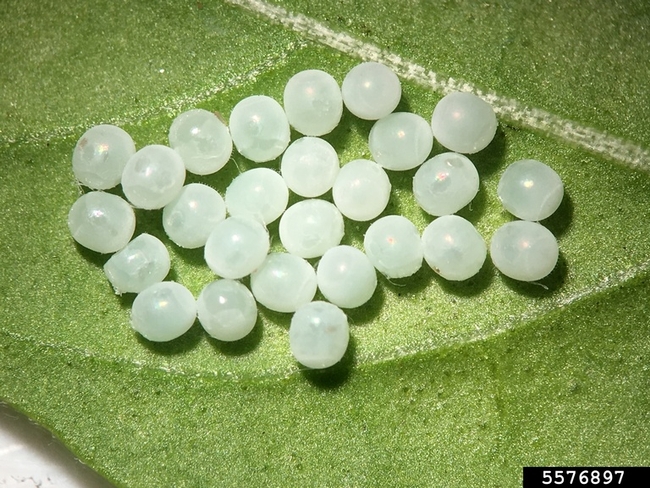 Brown marmorated stink bug eggs. Photo by Jennifer Carr, University of Florida, Bugwood.org |
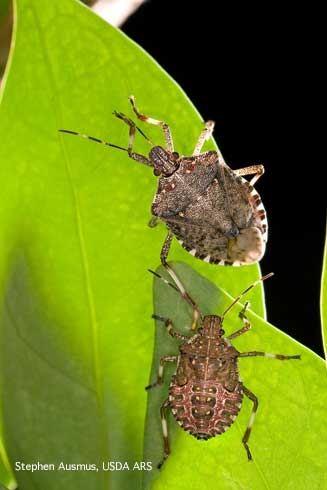 Adult (top) and mature nymph of the brown marmorated stink bug. Photo by Stephen Ausmus. |
Caterpillars often lay eggs in large clusters on leaves, but armyworm eggs are laid in fluffy masses on the crowns of seedlings or leaves of older plants. The fuzzy egg mass pictured here belongs to the beet armyworm, a pest of many types of vegetables. They feed on seedlings, can skeletonize leaves, and gouge holes in fruits.
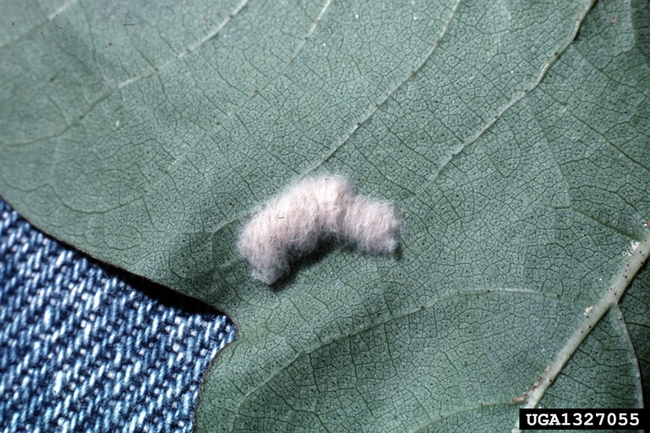 Beet armyworm egg mass. Photo by Alton N. Sparks, Jr., University of Georgia, Bugwood.org |
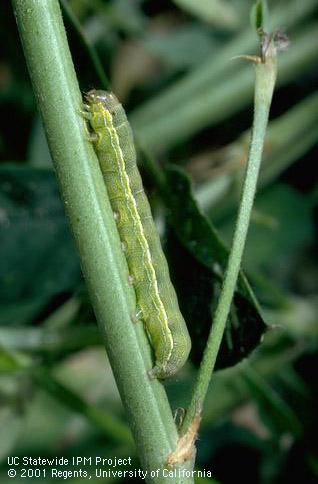 Larva of beet armyworm. Photo by Jack Kelly Clark, UC IPM. |
While not yet found in California, the egg masses of the invasive spotted lanternfly are easily recognized, occurring in groups of 30 to 50 eggs covered in a gray, mud-like covering. It's important to know what these eggs look like as they can easily be transported to new areas on firewood, building materials, trailers, and other flat surfaces.
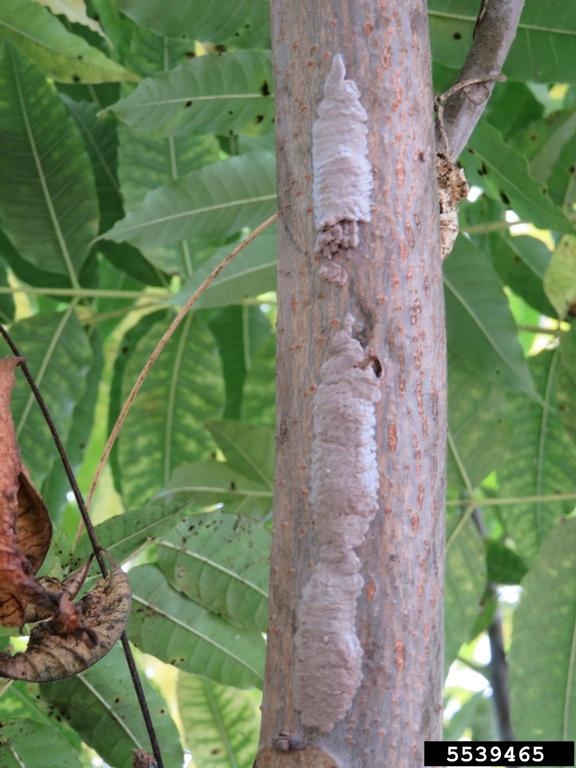 Spotted lanternfly egg masses. Photo by Kenneth R. Law, USDA APHIS PPQ, Bugwood.org |
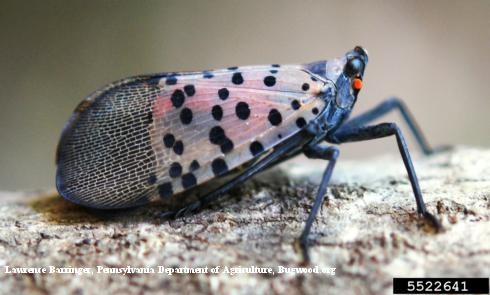 Adult spotted lanternfly. Photo by Lawrence Barringer, Pennsylvania Department of Agriculture, Bugwood.org |
Greenish blisters under the surface of leaves can indicate the presence of glassy winged sharpshooter's eggs, an invasive pest that is found mostly in southern California. Females lay egg masses in groups of 8 to 12 eggs arranged side-by-side under the epidermis of the lower leaf surface of young, fully developed leaves. Shortly after the eggs hatch, the leaf tissue surrounding the egg mass begins to turn brown and remains as a permanent brown scar. Glassy winged sharpshooters can transmit several important, often fatal, plant diseases in California.
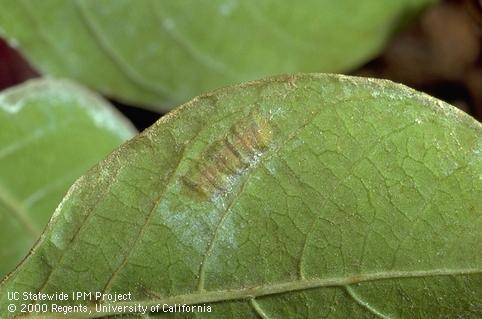 Glassy winged sharpshooter eggs. Photo by Jack Kelly Clark, UC IPM. |
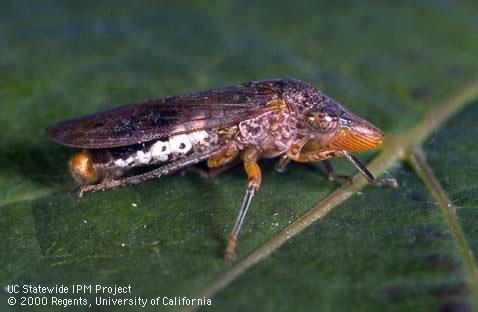 Glassy-winged sharpshooter leafhopper adult. Photo by Jack Kelly Clark, UC IPM. |
Praying mantid (or mantis) eggs are laid in masses attached to twigs, fences, or other surfaces. Egg masses are frothy and pale when first laid, then dry to a brown, hardened, paper-like material. The egg case pictured here belongs to the Carolina mantid, Stagmomantis carolina, which isn't found in California, but several other species are. Mantids feed on any insects or spiders they can catch, including both pests and beneficials.
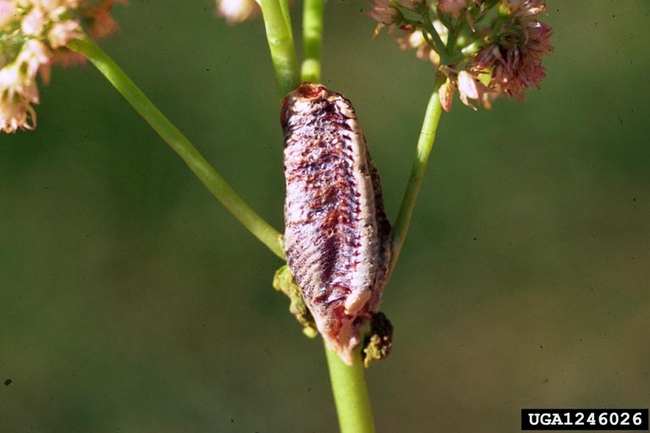 Carolina mantid egg mass. Photo by Whitney Cranshaw, Colorado State University, Bugwood.org |
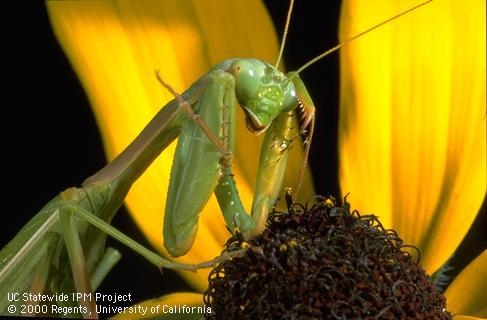 Adult Mediterranean mantis. Photo by Jack Kelly Clark, UC IPM. |
The brown, cylindrical eggs of all three species of leaffooted bugs are laid end-to-end in a string-like strand. They are often found along a stem or leaf midrib but may sometimes be found on fruit or other surfaces, as seen in this picture. Most egg masses have 10-15 eggs, although strands of more than 50 have been reported. Leaffooted bugs feed on many types of plants but damage occurs primarily when they feed on fruit or nut crops.
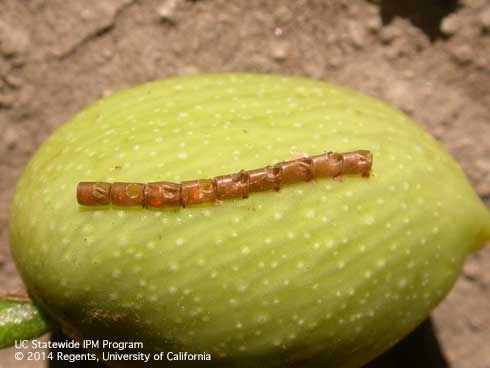 Leaffooted bug eggs. Photo by David R. Haviland, UCCE. |
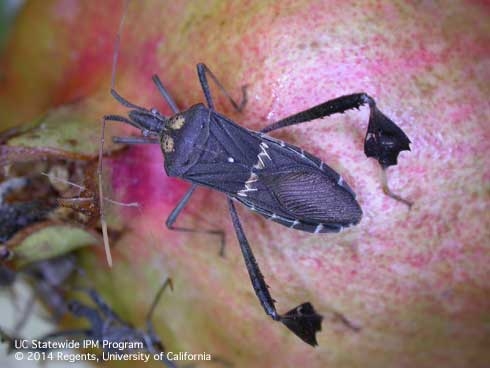 Adult leaffooted bug. Photo by David R. Haviland, UCCE. |
We hope you enjoyed this year's insect Easter egg hunt. Check back next year to test your insect egg identification skills!